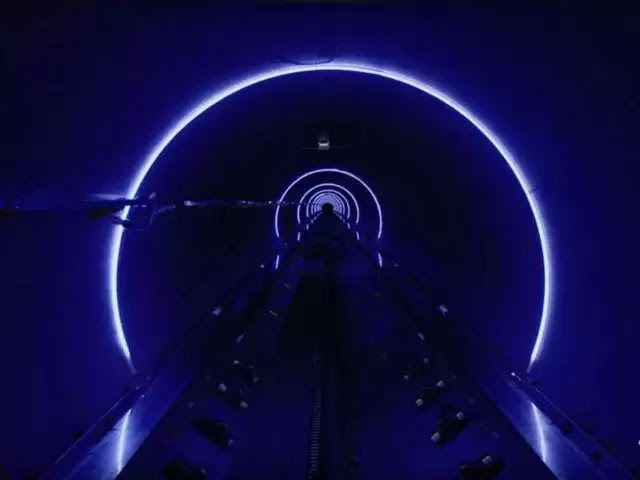UGC NET Results Declared: Check Marks and Subjectwise Cut-Off
Central Board of Secondary Education (CBSE) has declared the UGC NET July 2018 exam results. Students can check their results on the official website of CBSE https://cbseresults.nic.in/.
CBSE conducted the UGC NET July examination on 8 July for 84 subjects at 91 selected cities across the country. A total number of 11,48,235 candidates registered for UGC NET July examination out of which 859498 candidates appeared for both papers. 55,872 candidates have qualified for assistant professor and 3,929 for JFR and eligible for assistant professor both.
Here's how to check your score and cut-off for each category:
How to Check UGC NET July 2018 Results:
- Step 1: Go to official website for UGC NET July 2018 exam: www.cbsenet.nic.in
- Step 2: Click on the UGC NET result link available on the home page.
- Step 3: Enter the required details.
- Step 4: Submit and download result for reference.
UGC NET July 2018: Cut-Off
Here's the subject wise cut off for the UGC NET July 2018 for General (Unreserved Category):
- Economics: 66.00 (Jrf & Lectureship), 56.00 (Lectureship Only)
- Political Science: 61.33 (Jrf & Lectureship), 52.67 (Lectureship Only)
- Philosophy: 70.67 (Jrf & Lectureship), 62.00 (Lectureship Only)
- Psychology: 64.67 (Jrf & Lectureship), 56.00 (Lectureship Only)
- Sociology: 68.00 (Jrf & Lectureship), 58.00 (Lectureship Only)
- History: 56.67 (Jrf & Lectureship), 50.00 (Lectureship Only)
- Anthropology: 70.00 (Jrf & Lectureship), 58.00 (Lectureship Only)
- Commerce: 64.00 (Jrf & Lectureship), 54.67 (Lectureship Only)
- Education: 60.67 (Jrf & Lectureship), 51.33 (Lectureship Only)
- Social Work: 65.33 (Jrf & Lectureship), 56.67 (Lectureship Only)
Here's the subject wise cut off for the UGC NET July 2018 for OBC Category:
- Economics: 60.67 (Jrf & Lectureship), 49.33 (Lectureship Only)
- Political Science: 57.33 (Jrf & Lectureship), 48.67 (Lectureship Only)
- Philosophy: 67.33 (Jrf & Lectureship), 54.67 (Lectureship Only)
- Psychology: 60.00 (Jrf & Lectureship), 49.33 (Lectureship Only)
- Sociology: 64.67 (Jrf & Lectureship), 52.00 (Lectureship Only)
- History: 54.00 (Jrf & Lectureship), 46.00 (Lectureship Only)
- Anthropology: 67.33 (Jrf & Lectureship), 52.67 (Lectureship Only)
- Commerce: 59.33 (Jrf & Lectureship), 49.33 (Lectureship Only)
- Education: 56.67 (Jrf & Lectureship), 46.00 (Lectureship Only)
- Social Work: 62.00 (Jrf & Lectureship), 52.00 (Lectureship Only)
Here's the subject wise cut off for the UGC NET July 2018 for SC Category:
- Economics: 56.00 (Jrf & Lectureship), 45.33 (Lectureship Only)
- Political Science: 54.00 (Jrf & Lectureship), 45.33 (Lectureship Only)
- Philosophy: 64.00 (Jrf & Lectureship), 52.00 (Lectureship Only)
- Psychology: 56.00 (Jrf & Lectureship), 46.67 (Lectureship Only)
- Sociology: 59.33 (Jrf & Lectureship), 48.00 (Lectureship Only)
- History: 50.67 (Jrf & Lectureship), 43.33 (Lectureship Only)
- Anthropology: 66.00 (Jrf & Lectureship), 50.00 (Lectureship Only)
- Commerce: 55.33 (Jrf & Lectureship), 46.00 (Lectureship Only)
- Education: 52.00 (Jrf & Lectureship), 43.33 (Lectureship Only)
- Social Work: 58.67 (Jrf & Lectureship), 48.00 (Lectureship Only)
Here's the subject wise cut off for the UGC NET July 2018 for SC Category:
- Economics: 56.00 (Jrf & Lectureship), 45.33 (Lectureship Only)
- Political Science: 54.00 (Jrf & Lectureship), 45.33 (Lectureship Only)
- Philosophy: 64.00 (Jrf & Lectureship), 52.00 (Lectureship Only)
- Psychology: 56.00 (Jrf & Lectureship), 46.67 (Lectureship Only)
- Sociology: 59.33 (Jrf & Lectureship), 48.00 (Lectureship Only)
- History: 50.67 (Jrf & Lectureship), 43.33 (Lectureship Only)
- Anthropology: 66.00 (Jrf & Lectureship), 50.00 (Lectureship Only)
- Commerce: 55.33 (Jrf & Lectureship), 46.00 (Lectureship Only)
- Education: 52.00 (Jrf & Lectureship), 43.33 (Lectureship Only)
- Social Work: 58.67 (Jrf & Lectureship), 48.00 (Lectureship Only)
Here's the subject wise cut off for the UGC NET July 2018 for ST Category:
- Economics: 53.33 (Jrf & Lectureship), 44.00 (Lectureship Only)
- Political Science: 53.33 (Jrf & Lectureship), 45.33 (Lectureship Only)
- Philosophy: 58.00 (Jrf & Lectureship), 46.67 (Lectureship Only)
- Psychology: 58.67 (Jrf & Lectureship), 48.00 (Lectureship Only)
- Sociology: 62.00 (Jrf & Lectureship), 47.33 (Lectureship Only)
- History: 50.67 (Jrf & Lectureship), 43.33 (Lectureship Only)
- Anthropology: 57.33 (Jrf & Lectureship), 47.33 (Lectureship Only)
- Commerce: 54.67 (Jrf & Lectureship), 45.33 (Lectureship Only)
- Education: 50.00 (Jrf & Lectureship), 43.33 (Lectureship Only)
- Social Work: 58.00 (Jrf & Lectureship), 48.00 (Lectureship Only)
Here's the subject wise cut off for the UGC NET July 2018 for PWD-VI Category:
- Economics: 52.67 (Jrf & Lectureship), 42.00 (Lectureship Only)
- Political Science: 53.33 (Jrf & Lectureship), 40.67 (Lectureship Only)
- Philosophy: 63.33 (Jrf & Lectureship), 39.33 (Lectureship Only)
- Psychology: 43.33 (Jrf & Lectureship), 42.00 (Lectureship Only)
- Sociology: 56.67 (Jrf & Lectureship), 42.67 (Lectureship Only)
- History: 49.33 (Jrf & Lectureship), 40.00 (Lectureship Only)
- Anthropology: 52.00 (Jrf & Lectureship), 52.00 (Lectureship Only)
- Commerce: 60.00 (Jrf & Lectureship), 40.00 (Lectureship Only)
- Education: 46.00 (Jrf & Lectureship), 40.00 (Lectureship Only)
- Social Work: 64.67 (Jrf & Lectureship), 38.67 (Lectureship Only)












